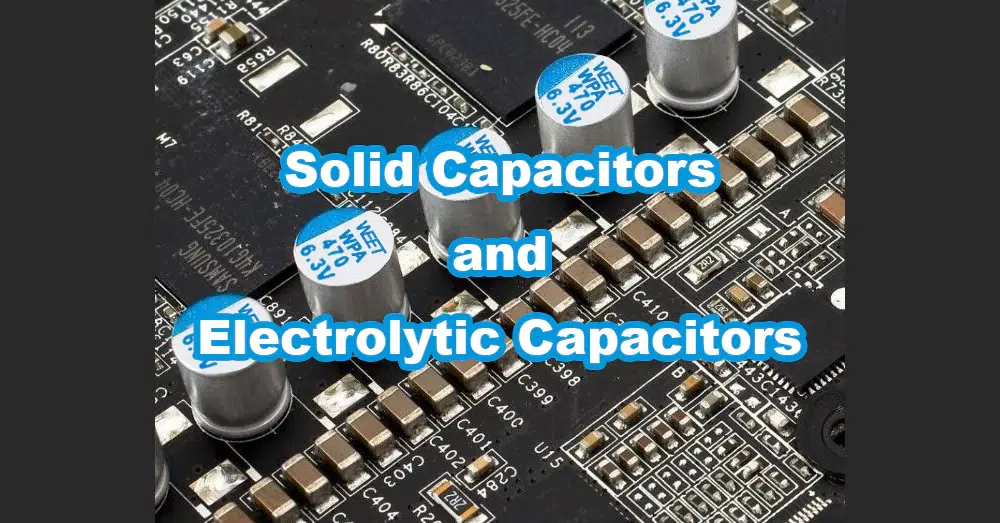Capacitor is a passive electronic component used to store electric charge. Common capacitors can be divided into two categories, namely solid capacitors and electrolytic capacitors.
Solid capacitor is a capacitor based on solid-state semiconductor field effect transistor technology. Its ability to store and release charges mainly comes from the lifetime of semiconductor carriers. The electrolytic capacitor uses the electrode potential difference formed by the electrolyte to store charge.

Their differences mainly include the following points:
1.Materials
The storage medium of solid capacitors is semiconductor materials, while the storage medium of electrolytic capacitors is electrolytes. Solid capacitors generally use semiconductor materials such as alumina and zirconium dioxide as storage media, while electrolytic capacitors use metals such as tungsten and aluminum as electrodes to store charges through chemical reactions in the electrolyte.
2. Capacitance value
Capacitance is an important parameter of a capacitor, which indicates the maximum amount of charge a capacitor can store. The capacitance value of electrolytic capacitors is generally larger than that of solid capacitors, generally between a few hundred microfarads and thousands of microfarads, while the capacitance value of solid capacitors is generally between a few picofarads and tens of microfarads.
3.Resistor
Resistor is provided by the capacitor’s internal circuitry, which affects the capacitor’s performance. Because solid capacitors use semiconductor materials, their internal resistance is relatively small, so their response speed is relatively fast, but correspondingly, their failure is also relatively rapid. The internal resistance of electrolytic capacitors is relatively large and the response time is longer, but they are more stable and durable.
4.Voltage
Capacitors need to withstand a certain voltage when used. If the voltage is too high, the capacitor will fail. Generally speaking, the voltage tolerance of electrolytic capacitors is higher than that of solid capacitors, and can reach hundreds or even thousands of volts. In contrast, solid capacitors have lower voltage tolerance and generally can only withstand voltages of tens of volts, but they are smaller and can be integrated into very small chips.

Based on the above characteristics, solid capacitors and electrolytic capacitors each have different advantages:
Advantages of solid capacitors:
1. Due to its small size and light weight, it can be used in some circuit designs with limited space.
2. Compared with electrolytic capacitors, it has a faster response speed and can be used in some high-speed circuits.
3. The price is lower than electrolytic capacitors.
Advantages of electrolytic capacitors:
1. The capacitance is large and can store more charges.
2. It has high voltage tolerance and can be used in high-voltage circuits.
3. Larger in size, it generates less heat, has a longer lifespan, and has better working stability.
To sum up, solid capacitors and electrolytic capacitors each have their own advantages and application areas. In practical applications, appropriate capacitors need to be selected based on specific needs.










